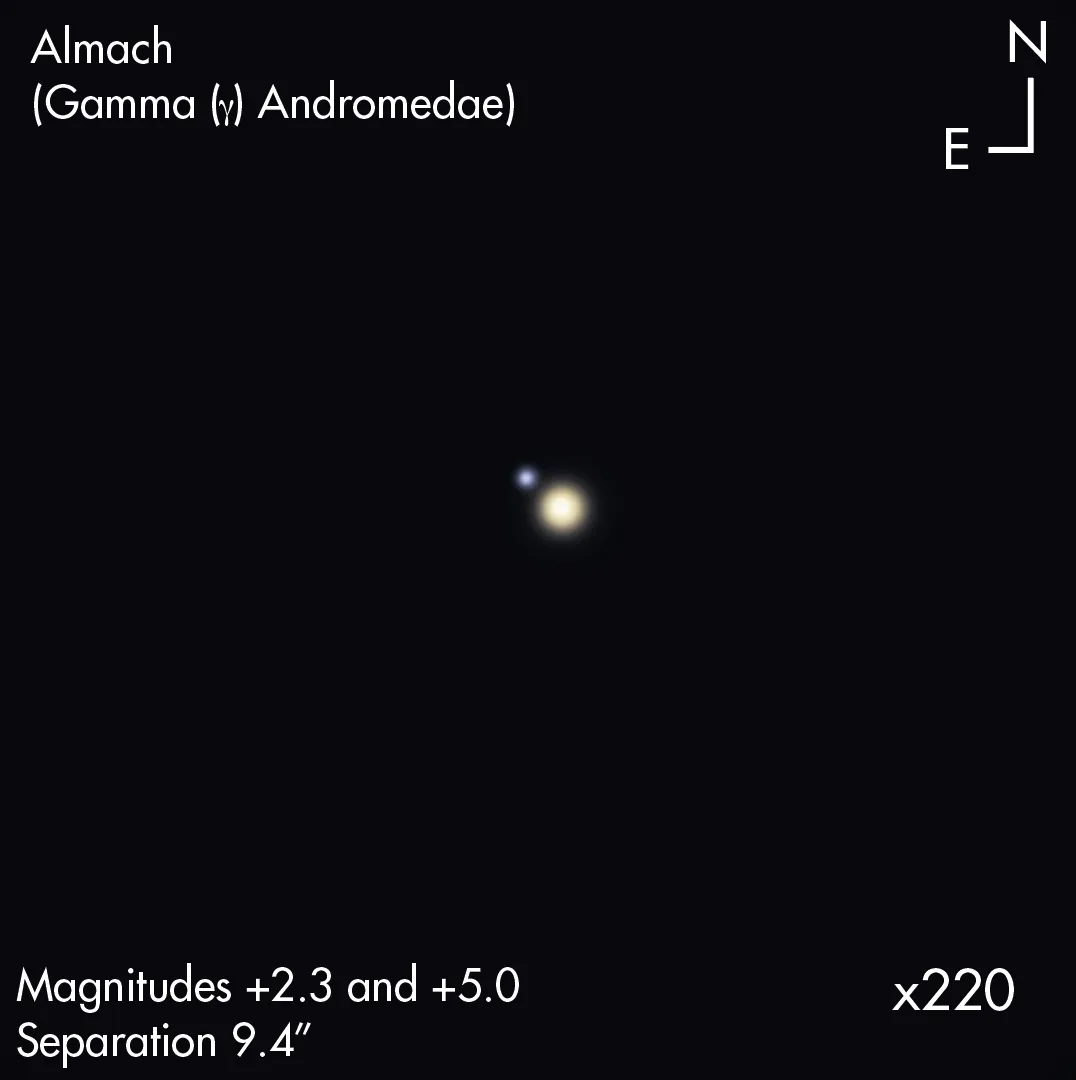Almach (Gamma (γ) Andromedae) sits at the eastern end of the wedge-shaped constellation of Andromeda.
Much like double star Albireo in Cygnus, Almach is a quadruple star whose component stars offer a spectacular yellow-blue colour contrast.

The primary, Gamma1 (γ1) Andromedae, is a giant star nearing the end of its life, estimated to be 80 times larger than the Sun and 2,000 times more luminous.
At 350 lightyears away, we see Gamma1 shining at mag. +2.3.
Its companion, Gamma2 (γ2) Andromedae, is mag. +4.9 and appears 9.6 arcseconds from the primary.
Consequently, it’s pretty straightforward to split Almach even with a small scope.
To observe Almach with a telescope, we’d recommend using an eyepiece that gives a power of around 50-75x to start, but don’t be afraid to increase magnification to a level that gives you a more pleasing view.
Colour contrast makes Gamma2 look bluish in colour.

About the Almach star system
As is often the case with binary stars, there’s more here than at first meets the eye.
Gamma2 is itself a close binary of mag. +5.1 and +6.3 stars separated by an average of 0.3 arcseconds and with an orbital period of 63.7 years.

The orbit is highly elliptical, with extremes of physical separation ranging from 13 to 52 AU, the average distance being 33 AU.
The brighter component of the Gamma2 pair also turns out to be a spectroscopic binary, with components orbiting one another every 2.67 days.
What originally looked like a beautifully coloured binary system is now at least a quadruple.
The combined magnitudes of the system present us with a naked-eye star of mag. +2.1.
If you've observed or captured images of Almach, get in touch by emailing contactus@skyatnightmagazine.com.
This article appeared in the November 2017 issue of BBC Sky at Night Magazine

